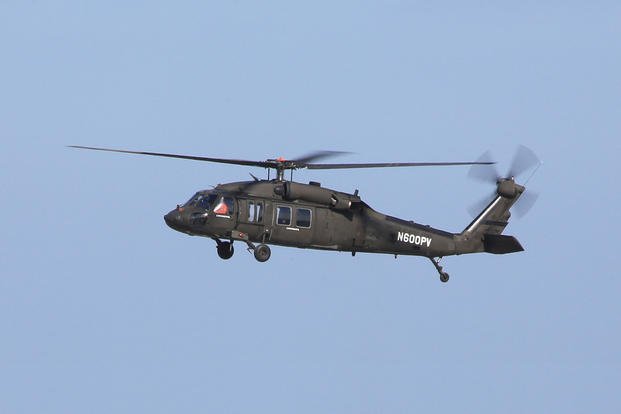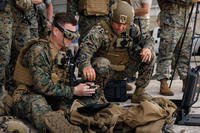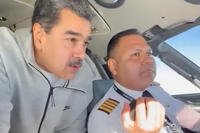Sikorsky announced Thursday that it will participate in an Army demonstration next year designed to show how its autonomous flight technology can assist UH-60 Black Hawk pilots during complex landings.
Sikorsky, a Lockheed Martin company, has been working to reduce pilot workload through the Defense Advanced Research Project Agency's (DARPA) Aircrew Labor In-Cockpit Automation System (ALIAS) program.
The firm has tested its ALIAS Matrix technology, which lets a pilot give supervised autonomy to a computer system, allowing it to take over flight tasks and serve as a digital copilot.
Read Next: New DoD Adviser Has Made Controversial Proposal: Get Rid of the Marine Corps
"We have really started thinking about 'what can the ALIAS Matrix system do' ... on a difficult mission, an ingress mission," Igor Cherepinsky, director of Sikorsky Innovations, told defense reporters Thursday.
"So, imagine two or more aircraft flying together, performing a typical ingress into a contested area. ... Things can change very rapidly, and they do. So, we are going to apply the ALIAS Matrix system to this problem, and sometime late next year show how it can help."
The company will work with the Army Technology Development Directorate at Joint Base Langley-Eustis, Virginia, and DARPA engineers to install the Sikorsky Optionally-Piloted Vehicle software, as well as sensors and other hardware, to an Army UH-60M that has been equipped with fly-by-wire technology, said Cherepinsky, who added that a Sikorsky S-76B helicopter equipped with ALIAS Matrix will fly with the Black Hawk during the demonstration.
Military.com reached out to DARPA for more details on the demonstration effort but did not receive an immediate response.
While it's still in the planning phase, the demonstration will include Army pilots and crew and will most likely occur during a training exercise, Cherepinsky said.
"We are hoping to participate in some Army exercise; we are not going to do a test for test sake," he said. "The system understands the mission; the system can plan a series of tasks, and those tasks get divided between the computer, if you will, and the humans. And of course, the human operator, the pilot, has the option to change that and has full control of the system."
The demonstration will likely test the system's ability to assist pilots in scenarios where they are forced to land in unplanned locations on an LZ during low-visibility or brown-out conditions, Cherepinsky said.
"What happens today is rapid communications between the pilots ... trying to see where the first aircraft is," he said. "No amount of training is going to compensate for the fact that you can't see where you are going.
"Our system guides both aircraft," he added. "If aircraft one is somewhere else, the system replans the path for aircraft two and communicates to both pilots."
The pilots can be flying the aircraft or allowing the system to fly autonomously while they are supervising it and performing other mission tasks, Cherepinsky said.
"That part almost doesn't matter because at least both pilots really do have a say as to what is going on," he said.
Sikorsky, which is competing in the Army's Future Long Range Assault Aircraft (FLRAA) effort to replace the Black Hawk, plans to use the ALIAS Matrix technology to satisfy the service's requirement for optional autonomy in the Future Vertical Lift (FVL) effort.
Cherepinsky said he couldn't speak for the Army, but believes the DARPA technology will likely go into FVL aircraft first and then possibly work its way into Army Black Hawks that are not replaced right away with FLRAA.
-- Matthew Cox can be reached at matthew.cox@military.com.
Related: These 2 Futuristic Aircraft Will Compete to Replace the Army's Black Hawk














